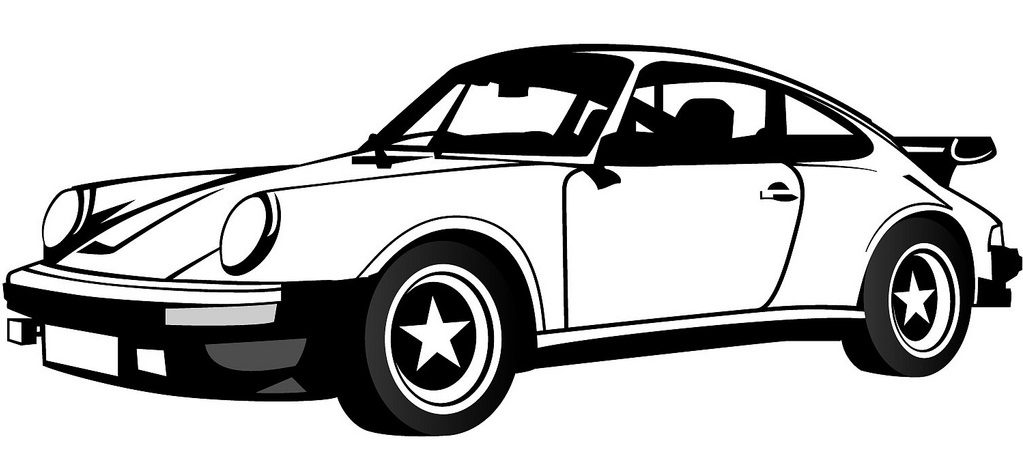A brief history of
Skoda
Introduction
The car manufacturer Skoda has made an important impact on the automotive world. In this article we will give a brief but detailed history of the Skoda marque.
We will look at the origins of Skoda looking at who, why, where and when Skoda was founded. We'll look at the design of the iconic Skoda logo and what are some the more significant Skoda models.
We'll take a glance at what racing history the Skoda has and who some of the most important people have been in the history of Skoda over the years.
Who, where, when and why was
Skoda founded?
Skoda, the Czech automobile manufacturer, has a rich history that dates back to the late 19th century. The company was founded in 1895 by Václav Laurin, a mechanic, and Václav Klement, a bookseller, under the name Laurin & Klement. The founders established the company in Mladá Boleslav, a town in the present-day Czech Republic, with the aim of manufacturing bicycles and later expanding into motorcycles.
The founding of Skoda was driven by a combination of factors, including the founders' entrepreneurial spirit, their passion for mechanical engineering, and the demand for reliable transportation in the region. Laurin and Klement recognized the growing popularity of bicycles and motorcycles and saw an opportunity to establish a successful manufacturing business.
In the early years, Laurin & Klement focused on producing bicycles with great success. The company's reputation for quality and innovation grew, allowing it to expand its operations. In 1899, Laurin & Klement ventured into motorcycle production, introducing their first motorcycle, the Slavia. The motorcycles were well received and helped establish the company as a respected manufacturer in the emerging transportation industry.
In 1905, Laurin & Klement expanded their production further by entering the automobile market. The company's first automobile, the Voiturette A, was introduced in the same year. The Voiturette A was a small and affordable car that quickly gained popularity, fueling the growth of Laurin & Klement as a car manufacturer.
The company's success in producing automobiles led to the decision to change its name to Skoda Works in 1925. The name "Skoda" was derived from the Czech word "koda," which translates to "damage" or "pity." The name change reflected the founders' desire to pay homage to the region's industrial heritage and their commitment to producing vehicles of exceptional quality and performance.
Skoda's strategic location in Mladá Boleslav played a crucial role in the company's foundation and subsequent growth. The town's proximity to the Czech capital, Prague, provided access to a skilled workforce and a well-developed transportation infrastructure. The region also had a rich industrial tradition, making it an ideal location for manufacturing operations.
Skoda's foundation marked the beginning of a journey that would shape the company into one of the leading automobile manufacturers in Central Europe. The founders' entrepreneurial vision, coupled with their passion for mechanical engineering and the demand for reliable transportation, set the stage for Skoda's success in the years to come. Today, Skoda continues to produce a wide range of vehicles known for their quality, innovation, and value.
How did the
Skoda logo originate?

How did the Skoda logo originate?
The Skoda logo has evolved over the years, reflecting the brand's growth and transformation. The history of the Skoda logo can be traced back to the early years of the company when it was known as Laurin & Klement. The original logo featured the intertwined initials "L" and "K" in a monogram style, symbolizing the founders' names. This logo represented the company's heritage and the founders' commitment to quality and craftsmanship.
In 1926, following the company's name change to Skoda Works, the logo underwent a significant redesign. The new logo featured the word "Skoda" in a stylized font, with a crown positioned above it. The crown was a nod to Skoda's collaboration with the Czech royal family, symbolizing the brand's association with excellence and prestige. This logo emphasized Skoda's aspirations to produce vehicles of the highest quality and its commitment to serving its customers with distinction.
Over the years, the Skoda logo continued to evolve, adapting to the changing design trends and reflecting the brand's modernization. In the 1990s, following Skoda's integration into the Volkswagen Group, the logo underwent a major redesign. The new logo featured a circular shape with the word "Skoda" inscribed within it, accompanied by an arrow-like element extending from the letter "S." This refreshed logo signified Skoda's rejuvenation and its alignment with Volkswagen's design philosophy, while maintaining the brand's distinctive identity.
In recent years, Skoda has introduced a more refined and simplified version of its logo. The current logo retains the circular shape but features a cleaner, more minimalist design. The word "Skoda" is displayed in bold, capitalized letters within the circle. The logo reflects Skoda's commitment to modernity, elegance, and clarity.
Skoda's logo history exemplifies the brand's evolution and adaptation to changing times. From the intertwined initials of Laurin & Klement to the crown symbolizing excellence, and the modern, minimalist design of the current logo, each iteration of the logo has represented Skoda's values and communicated its commitment to quality, innovation, and customer satisfaction.
What are some of the significant
Skoda models?
Skoda has produced a range of significant models throughout its history, with several notable high-performance vehicles that have captured the hearts of driving enthusiasts. From the early years to the present day, Skoda has demonstrated its commitment to combining performance, style, and innovation.
One of Skoda's iconic models from its early history is the Skoda 1100 OHC. Introduced in the 1950s, the 1100 OHC was a sports prototype that showcased Skoda's engineering capabilities. The lightweight and aerodynamic design, combined with a powerful engine, made the 1100 OHC a formidable competitor on the racing circuit. Its success in various motorsport events solidified Skoda's position as a manufacturer capable of producing high-performance vehicles.
In the 1970s, Skoda introduced the Skoda 130 RS, a legendary rally car that became an icon of motorsports. The 130 RS featured a lightweight body, improved aerodynamics, and a modified engine, delivering impressive performance on both tarmac and gravel surfaces. The 130 RS achieved significant success in rallying, including class victories in the prestigious Monte Carlo Rally and other international events. Its agile handling and competitive performance established Skoda as a force to be reckoned with in the world of motorsports.
In the 1990s, Skoda introduced the Skoda Felicia Kit Car, another significant high-performance model. The Felicia Kit Car was developed specifically for rallying, featuring enhanced suspension, a stripped-out interior, and a powerful engine. The car achieved remarkable success in the FIA 2-Litre World Rally Cup, with Skoda claiming multiple victories and securing the championship title in 1999. The Felicia Kit Car demonstrated Skoda's ability to produce competitive rally cars and further enhanced the brand's reputation in motorsports.
In recent years, Skoda has continued its focus on high-performance models with the introduction of the Skoda Octavia RS. Available in both sedan and wagon variants, the Octavia RS offers a blend of sporty design, refined interiors, and powerful engines. The Octavia RS combines practicality and performance, appealing to drivers who seek a balance between everyday usability and exhilarating driving dynamics.
Furthermore, Skoda's involvement in electric performance is evident with the introduction of the Skoda Enyaq iV RS, the brand's first fully electric performance SUV. The Enyaq iV RS combines zero-emission driving with impressive power and acceleration, showcasing Skoda's commitment to sustainable performance and innovative electric technology.
Skoda's most significant high-performance models span its history, highlighting the brand's dedication to producing vehicles that deliver thrilling driving experiences. From the early years of the 1100 OHC to the present-day Octavia RS and Enyaq iV RS, Skoda continues to push the boundaries of performance, demonstrating its ability to combine power, precision, and innovation in its vehicles.

One of Skoda's Most Iconic Models
Who are some of the most important people in
Skoda's History
Skoda owes much of its success to the talented individuals who have contributed to the brand's growth and reputation. From visionary leaders to innovative designers and skilled engineers, these significant people have played a pivotal role in shaping Skoda into the respected automaker it is today.
One of the influential figures in Skoda's history is Václav Laurin, one of the company's co-founders. Laurin, a mechanic by trade, possessed a passion for mechanical engineering and a keen understanding of the automotive industry. His expertise and entrepreneurial spirit laid the foundation for Skoda's early success and its reputation for quality craftsmanship.
Another notable figure is Emil Skoda, an industrialist and philanthropist who played a vital role in the development of Skoda. Skoda, after whom the company was named, provided financial support and resources to help expand the company's operations. His business acumen and dedication to the success of Skoda were instrumental in propelling the company forward.
Skoda's success in motorsports can be attributed, in part, to the contributions of individuals such as Michal Hrabanek. Hrabanek, the former head of Skoda Motorsport, played a key role in overseeing Skoda's motorsport programs and bringing the brand to new heights in rallying. Under his leadership, Skoda achieved numerous victories and championship titles in various rally competitions, elevating the brand's reputation in the motorsports world.
In addition to motorsports, Skoda's success in vehicle design can be credited to individuals such as Jozef Kaban. Kaban, a renowned automobile designer, served as the head of Skoda's design department and played a pivotal role in shaping the brand's visual identity. His innovative design language and attention to detail can be seen in the modern and dynamic aesthetics of Skoda's models, helping the brand establish a distinct and recognizable design identity.
Skoda's commitment to innovation and technological advancement is reflected in the contributions of individuals such as Christian Strube. Strube, the former head of Skoda's technical development department, led the company's efforts in advancing engineering technologies and improving vehicle performance. His expertise and leadership were instrumental in the development of Skoda's cutting-edge technologies and the integration of advanced features into the brand's vehicles.
Furthermore, the dedication and expertise of Skoda's workforce, including skilled technicians, engineers, and craftsmen, have been invaluable to the company's success. These individuals contribute to every aspect of Skoda's operations, from research and development to manufacturing and quality control, ensuring that each vehicle meets the brand's high standards of excellence.
The significant people associated with Skoda have played a crucial role in shaping the brand's legacy and contributing to its position as a respected car manufacturer. Their expertise, vision, and dedication have propelled Skoda forward, driving innovation, and delivering vehicles that captivate customers with their quality, design, and performance.

One of the most influential people in the history of Skoda
Skoda's Racing History
Skoda has a rich racing history that spans several decades and encompasses various motorsport disciplines. Skoda's involvement in racing has not only showcased the brand's engineering capabilities but also provided an opportunity to demonstrate its performance and durability on some of the world's most challenging circuits.
One of Skoda's significant ventures into motorsports was its participation in rallying. Skoda made its mark in the rallying world with the Skoda 130 RS, a legendary car that became an icon of the sport. The lightweight and agile 130 RS, based on the Skoda 110 R coupe, was highly successful in the European Touring Car Championship and various national and international rallying events. With its powerful engine and exceptional handling, the 130 RS secured numerous victories and cemented Skoda's reputation as a formidable force in rallying.
Skoda's success in rallying continued with the introduction of the Skoda Felicia Kit Car. This purpose-built rally car, based on the Skoda Felicia, competed in the FIA 2-Litre World Rally Cup. The Felicia Kit Car showcased Skoda's commitment to motorsports and its ability to produce competitive race cars. With its lightweight construction, advanced suspension, and powerful engine, the Felicia Kit Car achieved notable success, including multiple victories in the championship.
In recent years, Skoda's involvement in motorsports has extended to circuit racing, with the brand's participation in touring car championships. Skoda has competed in various touring car series, including the TCR International Series and the World Touring Car Cup (WTCR). Skoda entered the touring car arena with the Skoda Octavia TCR, a high-performance touring car based on the Skoda Octavia. The Octavia TCR showcased Skoda's engineering expertise and performance capabilities, delivering competitive performances against strong competition on racetracks around the world.
Skoda's commitment to electric racing is evident with its entry into the electric touring car championship, the PURE ETCR. Skoda became one of the pioneering brands in the series, joining other leading manufacturers in the development of electric race cars. The participation in the PURE ETCR demonstrates Skoda's dedication to sustainable racing and the advancement of electric vehicle technology.
In addition to professional racing, Skoda has also engaged with motorsports enthusiasts through initiatives such as the Skoda Motorsport Experience. This program offers customers and fans the opportunity to experience the thrill of driving Skoda's rally-inspired vehicles in a controlled environment. The Skoda Motorsport Experience events provide a hands-on, adrenaline-fueled experience that further strengthens the connection between Skoda and its racing heritage.
Skoda's racing history showcases the brand's passion for motorsports and its commitment to performance excellence. Whether in rallying, touring car championships, or electric racing, Skoda has consistently demonstrated its engineering prowess and ability to compete at the highest level. Through its involvement in racing, Skoda has not only bolstered its brand image but also pushed the boundaries of performance and innovation, creating vehicles that captivate racing enthusiasts around the world.
Summary
Skoda embodies a legacy of performance, innovation, and engineering excellence. With a rich history spanning over a century, Skoda has become synonymous with quality, reliability, and value. The brand has produced significant models, showcased its racing pedigree, and attracted a loyal customer base worldwide.
Skoda's success can be attributed to a combination of factors, including its talented workforce, visionary leadership, and commitment to technological advancement. The brand's significant people, from founders to designers and engineers, have played a pivotal role in shaping Skoda's legacy and contributing to its position as a respected automaker.
Skoda's racing heritage further underscores its commitment to performance. The brand's involvement in rallying and touring car championships has showcased its engineering prowess and demonstrated its ability to compete at the highest level. Skoda's participation in motorsports not only solidifies its reputation but also fuels innovation and drives the development of high-performance vehicles for enthusiasts around the world.
With its dedication to quality, innovation, and customer satisfaction, Skoda continues to push boundaries and deliver vehicles that captivate drivers. From its racing history to its significant models and talented individuals, Skoda remains a driving force in the automotive industry, embodying a combination of performance, style, and value.
View Skoda Car Specifications
More Manufacturer Histories.

























